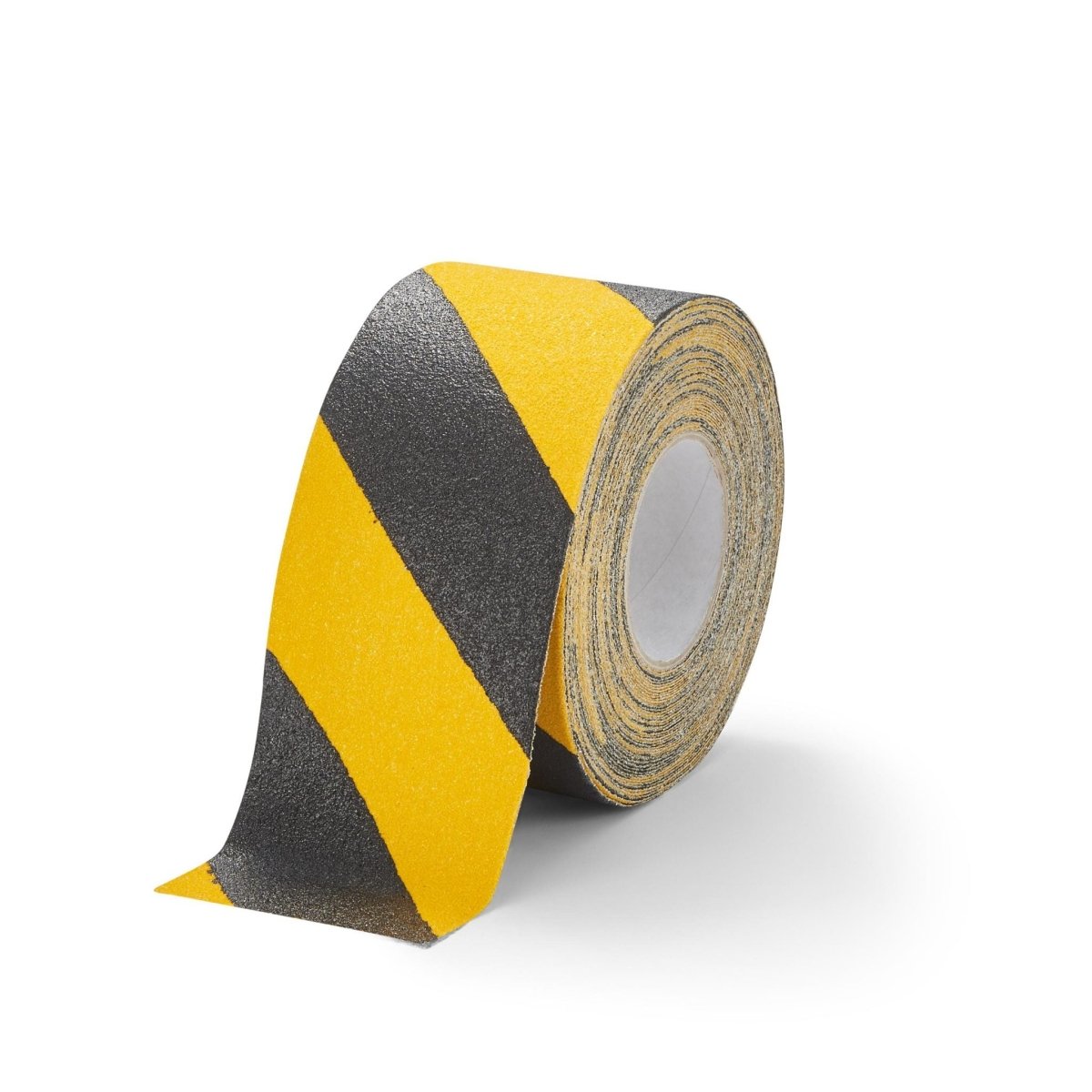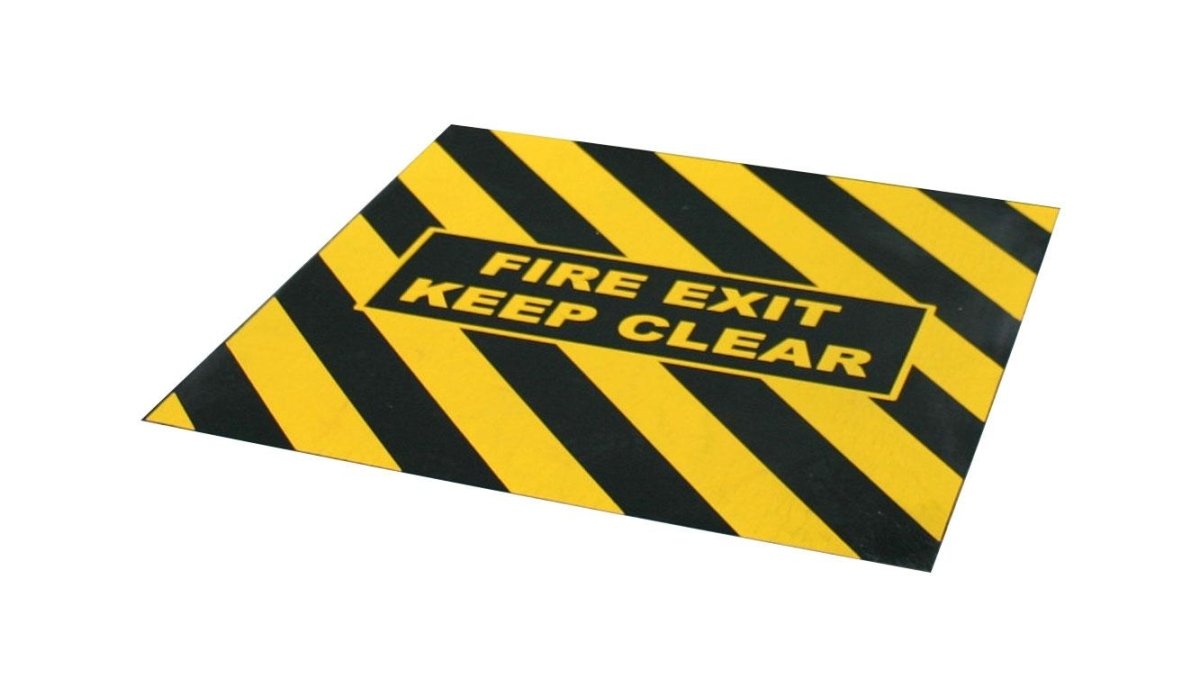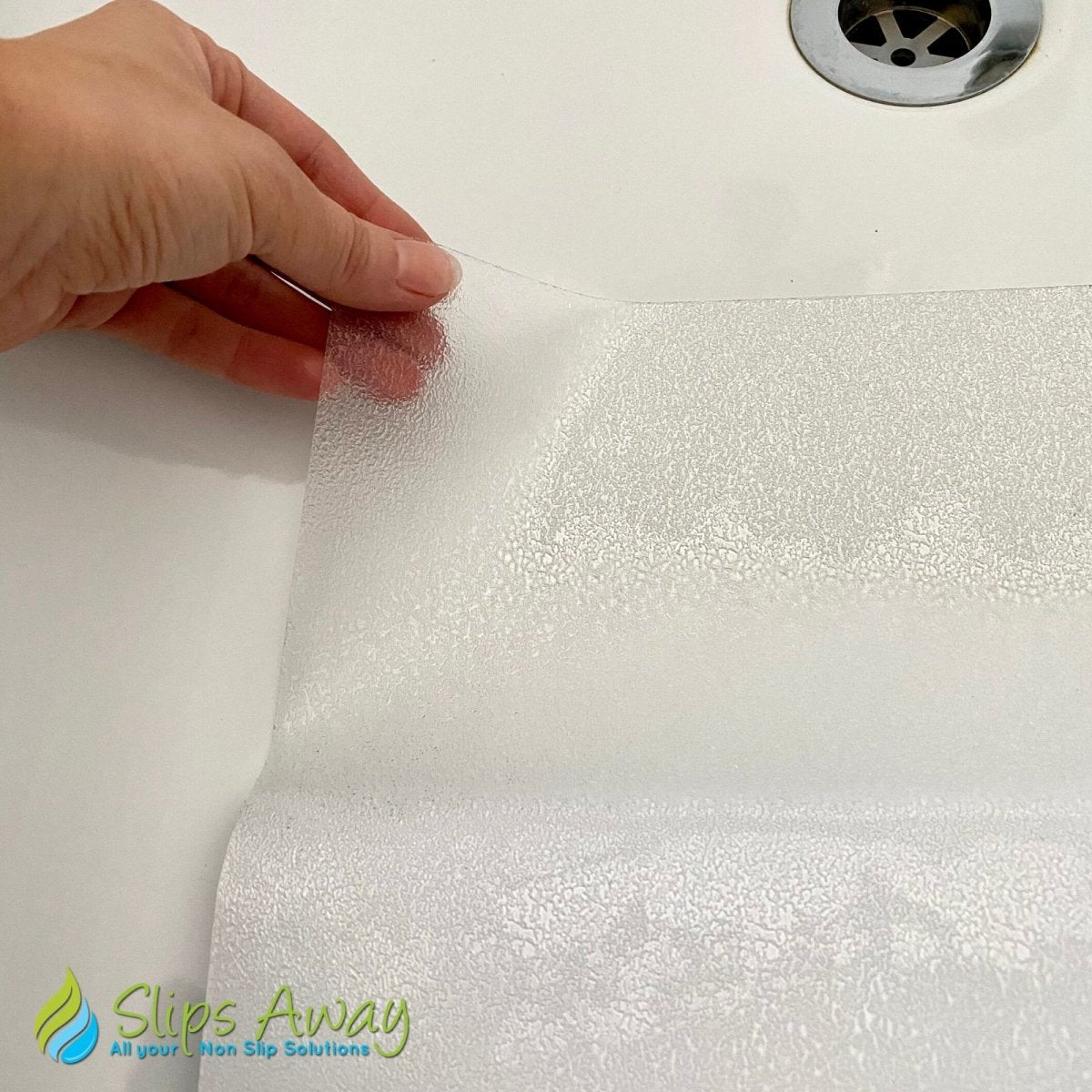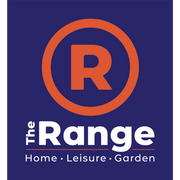Without the correct warning systems and barriers, controlling large populations of people can be an impossible task. This is where danger or hazard tape comes in.
A majority of us have come into contact with hazard tape at large events and accident scenes but may never have realized the psychological effect it has as a deterrent.
This post looks at how and where hazard tape is used as well as other important things you may need to know about the use of hazard tape in public places.

What is Hazard Tape?
Hazard tape is also known by many other names, such as barricade tape, caution tape, danger tape, and construction tape, among others. In general, hazard tape is used in locations where safety and health concerns have been identified, but aren’t immediately apparent to individuals using the affected spaces or entering the potentially harmful area.
Normally, caution tape is used in conjunction with warning signs that define the type of hazard, as well as any preventative measures that must be taken to avoid the hazard. There are several uses for hazard tape, but the most common one is to warn people of potential danger in a marked area.
This is done by using brightly coloured tape with alternating red and white or yellow and black stripes or the words “Caution” or “Danger” in large letters printed on it. The brightly coloured tape works as a minor obstacle to prevent unintentional entry into the dangerous region for the sake of public safety. It is also used by police and other law enforcement officers in scenes of crime.
Sometimes, the tape is used as a visual warning sign and demarcation to deter people from entering dangerous areas such as industrial or commercial construction sites, roadworks construction sites or the scene of an accident or for crime scene preservation.
It is also used to prevent employees and visitors from handling inoperable machinery or equipment at a construction site or industrial facility.
Hazard Tape Design and Regulations
Barricade tape comes in a variety of widths and thicknesses depending on the manufacturer. Durable and tear-proof plastic materials such as polypropylene or nylon are commonly used to make hazard tape. The tape is typically defined by a colourful background and warning text.
A customised message can also be written on ordinary barricade tape. If you’re going to use custom barricade tape, you’ll want to be sure it’s compliant with relevant regulations.
According to the UK’s health and safety rules, you can use either red-and-white or yellow-and-black tape to mark dangerous or hazardous areas.
Obstacles and dangerous sites must be marked according to health and safety laws.
Some of the most common risk areas and situations that require clear marking using yellow tape include the following:
- Places where people are likely to slip, trip, or fall
- Where there are falling objects
- Where people or vehicles can easily collide with dangerous objects.
You’ll want to make sure that the stripes are 45 degrees apart, with equal size yellow and black or red and white stripes alternated between each other.
The law states that you can use hazard tape as long as it’s directly proportionated to the amount of obstruction or danger in question.
Why Use Hazard Tape?
Safety in the workplace is one of the most important aspects in determining the efficiency of any institution, according to a recent study.
The more secure the facility, the more dedicated the workers will be since they will not have to worry about their own safety too much. In addition to enforcing safety regulations, the government conducts audits to guarantee compliance with a variety of laws, including workplace safety regulations.
Ethically, it should not matter whether an organization is forced to maintain workplace safety measures or not; maintaining a safe environment for employees is the primary obligation of any facility owner, no matter what.
Facility owners can take a variety of steps to guarantee that there are obvious signals of health and safety hazards in their facilities and other workplaces.
For example, employers use “caution tape” to warn employees of dangerous zones and prevent dangerous accidents. The use of hazard tape not only ensures that you comply with safety laws but can also save lives.
Where is Hazard Tape Used?
Caution, danger, and lead hazard are the three most typical warnings inscribed on barricade tapes. Caution and danger tapes are often used interchangeably.
But caution tapes are more typically used to notify people working in dangerous places and advise them to take caution, whilst danger tapes are often used to block entry to unsafe places that could put people at risk of serious bodily harm, or death. For example, people can be warned about potential lead exposure by using lead hazard warning tapes.
The most common places where hazard tapes are used include the following:
- Containment areas
- Construction sites
- Crime scenes
- Traffic control areas
- As fire exit markers in cases of emergency

Looking for Hazard Tape to Enhance Workplace Safety?
If you are looking for high-quality hazard tape that reflects your company’s dedication to safety, look no further than SlipsAway hazard tape products.
Hazard tape products from SlipsAway are constructed from weather-resistant PE-laminated tape and can be used to efficiently shut off or designate potentially hazardous places. Customers can choose from rolls or pre-cut hazard tape items to meet their needs and budget.














